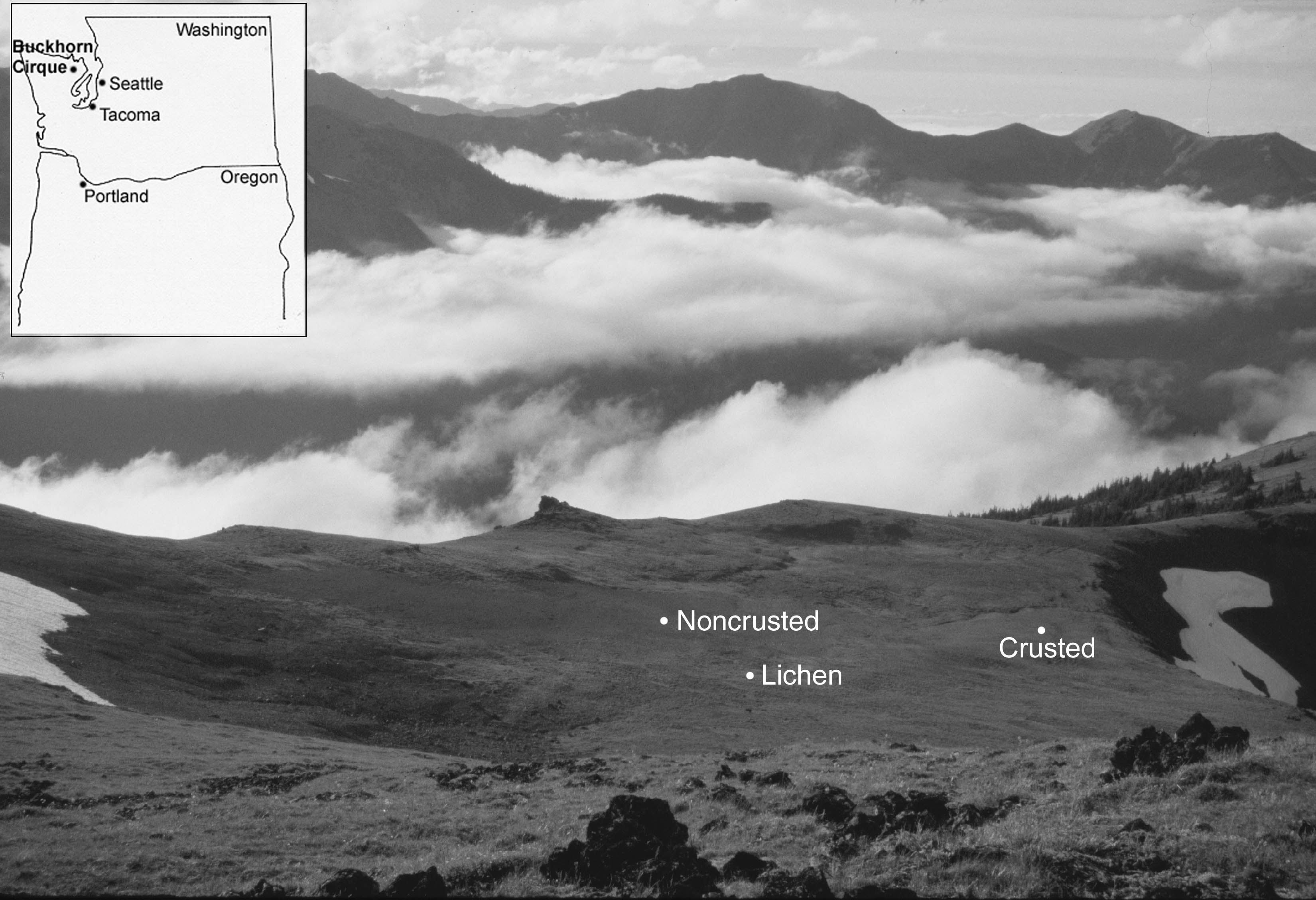
Research on the
Ecosystem Effects of Cryptobiotic Crusts
WARREN GOLD
Buckhorn Cirque
Olympic Mountains, Washington
This alpine basin of Buckhorn Mountain in the Olympic Mountains of
Washington State is a unique area of alpine tundra at 6500 ft elevation (47°
62’ N, 123° 07’ W). The
central slopes of the basin, underlain by both sedimentary and basaltic rock,
are undergoing active downslope soil movement and are dominated by a cover of
cryptobiotic crusts and scattered alpine plants (e.g. Antennaria
rosea, Arenaria sp., Carex sp., Douglasia laevigata,
Luzula sp., Phlox hendersonii,
Salix nivalis, Smelowskia calycina, etc.).
Two distinct types of cryptobiotic crusts occur in the basin: a thin
surface layer of mosses (< 2 cm) and foliose lichens over a very coarse
mineral substrate (the “crusted site”) and a
relatively thick (3-10 cm) surface mat of fruticose lichens (the
"lichen" site - dominated by species of Cetraria). The vascular
plant community of the crusted site is dominated by Salix
nivalis,
while the lichen site is characterized by vascular species such as Campanula rotundifolia, and a number of graminoids ( e.g., Carex
phaeocephala, Festuca saximontana, Trisetum
spicatum) and composites (e.g., Senecio
lugens, Solidago multiradiata).
The cirque also contains "noncrusted" surfaces that consist of
exposures of coarse-grained mineral substrate with widely scattered vascular
plants. These sites occupy
concavities with late-lying snow.
The photo below shows Buckhorn Cirque from near the summit of Buckhorn Mountain. Study sites in each of the three surface types are indicated.

The work from this study is being published as:
Gold,
WG, Glew KA, and LG Dickson (2000) Functional Influences of Cryptobiotic Surface
Crusts in an Alpine Tundra Basin of the Olympic Mountains, Washington, U.S.A. Submitted
to Arctic, Alpine & Antarctic Research (Nov. 1999).